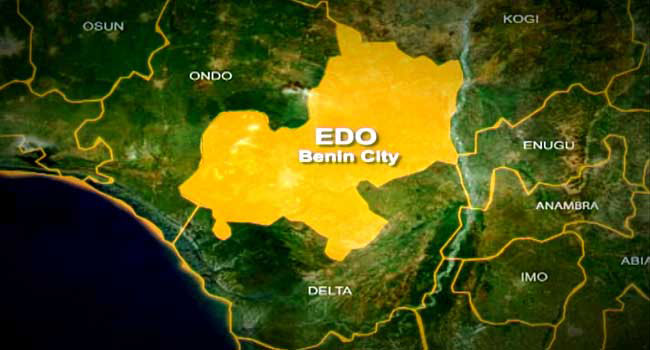Paragraph 1: The Interception and Rescue of Two Minors
Two underage girls, aged 13 and 14, were intercepted in Zaria, Kaduna State, Nigeria, while being trafficked to Libya. One of the girls suffers from sickle cell anemia. The Edo State Migration Agency, spearheaded by Director General Lucky Agazumah, confirmed the rescue. The girls were enticed by traffickers with promises of a better life abroad, specifically working as domestic helpers. This incident highlights the pervasive issue of human trafficking, particularly targeting vulnerable minors, with the allure of false opportunities masking the grim realities of exploitation and forced labor.
Paragraph 2: The Traffickers’ Modus Operandi and Intended Destination
The traffickers initially told the girls they would be going to Italy to work for an elderly couple. They instructed the girls not to inform their parents about the trip, promising they could contact them once they arrived abroad. This deceptive tactic is commonly used by traffickers to prevent parental intervention and maintain control over their victims. The girls were given specific instructions to call a contact person upon reaching Kano State, indicating a planned hand-off to another link in the trafficking chain. The ultimate destination, Libya, is known as a dangerous transit point for migrants attempting to reach Europe, often facing inhumane conditions and further exploitation.
Paragraph 3: The Journey and the Turning Point
The girls’ journey began in Benin City, Edo State, where they were put on a bus bound for Kano. They were provided with provisions for the trip, including food, drink, and hijabs, likely intended for use later in their journey. Upon reaching Zaria, a crucial turning point occurred. The trafficker, whose mother, Comfort Etim, had been apprehended by authorities, pressured the girls to return to Benin City. This intervention, though born from the trafficker’s self-preservation, inadvertently led to the girls’ rescue. Another individual involved in the Kano leg of the journey urged the girls to continue, demonstrating the complex network involved in trafficking operations.
Paragraph 4: The Victims’ Accounts and Dreams of a Better Life
One of the girls, identified as Success, expressed relief at being back home. She recounted how the trafficker had painted a picture of a comfortable life working for an elderly couple in Italy. She followed instructions, keeping the journey secret from her mother, trusting the promises of a better future. The other girl, battling sickle cell anemia, saw the trip as a chance to surprise her mother with her newfound success abroad. Her desire for a better life, despite her health condition, underscores the vulnerability of individuals seeking opportunities and the ease with which they can fall prey to exploitation.
Paragraph 5: The Mother’s Confession and the Scope of the Operation
Comfort Etim, the mother of the suspected trafficker, revealed her daughter’s involvement in previous trafficking incidents. She admitted her daughter had transported six other minors to Libya, exposing a pattern of exploitation and a network likely extending beyond this single incident. Etim’s statement suggests a potential awareness, if not complicity, in her daughter’s activities, highlighting the complex familial and social dynamics that can facilitate trafficking. The fact that the trafficker interrogated the girls before taking them to the bus station suggests a degree of calculation and a process for selecting vulnerable individuals.
Paragraph 6: Legal Ramifications and the Fight Against Trafficking
The Edo State Migration Agency has vowed to prosecute the traffickers and hold all those involved accountable. The transportation company that facilitated the minors’ journey also faces sanctions for its role in transporting unaccompanied minors. Director General Agazumah emphasized the agency’s commitment to combating human trafficking and ensuring there is no safe haven for traffickers in the state. This incident underscores the need for continued vigilance and collaboration among law enforcement, government agencies, and communities to dismantle trafficking networks, protect vulnerable individuals, and bring perpetrators to justice. The focus must also include raising awareness, providing support to victims, and addressing the root causes that make people susceptible to such exploitation, such as poverty, lack of opportunities, and social inequalities.


